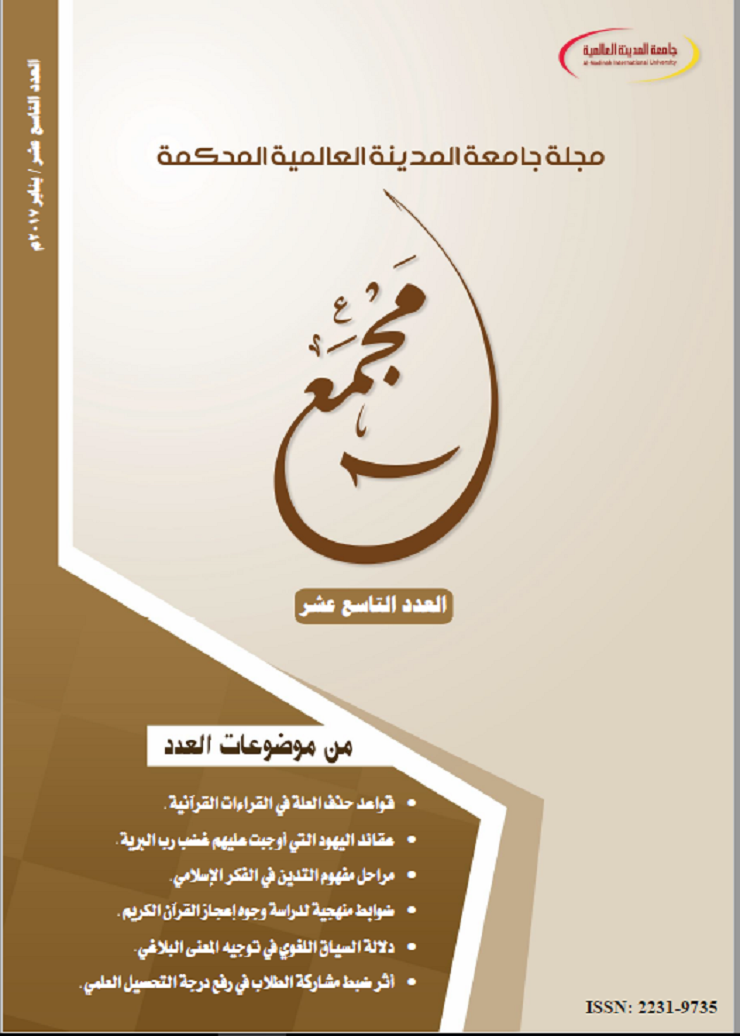ضوابط المنفعة المباحة العائدة على المقرِض في المذهب المالكي مع تطبيقات معاصرة
##plugins.themes.bootstrap3.article.main##
الملخص
يهدف هذا البحث إلى تحرير الضوابط والشروط التي وضعها المالكية، للتمييز بين أنواع المنفعة المقترنة بالقرض، المحرمة منها التي هي من الربا، والمباحة التي لا تندرج تحته. وذلك أن علماء المالكية -أثناء نظرهم في صور القرض- أحيانًا يمنعون بعض الصور، ويعللون ذلك بوجود منفعة عائدة على المقرِض، عملًا بقاعدة "كل قرض جر نفعا فهو ربا"، وأحيانًا يبيحون بعض الصور مع تضمنها منفعة للمقرِض، مخالفين في الظاهر هذه القاعدة، فجاء هذا البحث لدراسة هذه الإشكالية وتوضيح مرادهم بـ"النفع" الوارد في القاعدة المذكورة. وقد اعتُمِد في البحث المنهجُ الاستقرائي، في جمع المسائل التي أجاز فيها فقهاء المالكية للمقرِض أن ينتفع بمنفعة جرها له قرضه، بالرجوع إلى أشهر كتب الفقه المالكي، والمنهج الوصفي التحليلي في تحليلها وبيان العلاقات الجامعة بينها، واستخلاص الضوابط والقواعد التي وضعوها لتمييز هذا النوع من المنفعة عن غيره، ثم ذكر بعض التطبيقات المعاصرة للمعاملات الإسلامية، مما كُيِّفَ على أنه عقد قرض يتضمن منفعة للمقرض. وتكمن أهمية هذا البحث في الحاجة إلى تحرير مسائل المنفعة في القرض، ووضع ضوابط لتأصيلها وجمع شتاتها؛ لحفظ المعاملات الإسلامية من أهم خطر يتهددها، وهو الربا، والإفادة منها في تخريج التطبيقات المعاصرة عليها، وتطويرها حتى تواكب تطورات العصر الذي نعيشه. ومن أهم النتائج الذي توصل إليها البحث أن هناك عدة صور أباح فيها المالكية للمقرض أن ينتفع بشيء عائد عليه من قرضه، منها ما اتفقوا عليه، ومنها ما اختلفوا فيه على أقوال، وأنهم ضبطوا إباحة المنفعة العائدة على المقرض من قرضه بضوابط وشروط، اتفقوا على أربعة، صرحوا بثلاثة منها وأشاروا إلى الرابع، وأضاف بعضهم شرطًا خامسًا، والصحيح أنه غير معتد به.
Abstract
This research aims to study the conditions and criteria established by Maliki School of Fiqh, to distinguish between the types of benefits associated with the loan (benevolent loan), which is forbidden and considered from usury, and the permissible one which do not fall under it. So that the Maliki scholars during their seeing in Types of loan, sometimes they prevent some images, and account for the existence of benefit return back to the lender from his loan, according to the rule "Every loan that brings a benefit is usury (riba)", and sometimes They allow some pictures with the existence of benefit for the lender, contradicting apparently the previous rule, so this research came to study this problem and to clarify what they mean by "benefit" in the rule stated. It has been adopted in the search inductive approach, in the collection of the issues in which Maliki scholars permitted to the lender to benefit with usefulness return back to him from his loan, by reference to the most authenticated books of Maliki school of Fiqh , and the descriptive analytical approach in analysis this issues and clarify the of the ties that bind among them , and draw the rules and criteria they have set to distinguish this type of benefit on the other, then mentioned some contemporary applications of Islamic transactions, which considered as a loan contract includes benefit for the lender. The significance of this research is embodied in the need to vet the benefit issues in the loan, and set up rules and criteria that define and gather it; to save the Islamic transactions from the most important danger threatened it, which is usury, and profiting from taking it as a model to create new contemporary applications, and develop it to keep pace with modern life. Among the most important results reached by the research that there are several images where Maliki scholars has permitted the lender to benefit with something return to him from his loan, some of this issues they had agreed upon, and some of which differed about it, and they impose a set of terms and conditions to specify the permissible benefit that can the lender profit from his loan, they agreed on four of these conditions, they stated three of them and pointed to the fourth, and one scholar added another condition, but the majority of Maliki jurists did not consider this fifth condition.

